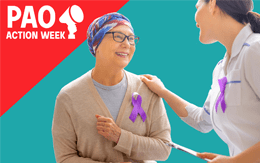
Pharmaceutical marketing has changed dramatically over the past two decades. The Office of Inspector General’s (OIG’s) Special Fraud Alert mandated tighter controls over peer-to-peer speaker programs. The Sunshine Act required greater transparency into monetary transactions between pharma manufacturers and healthcare providers (HCPs). Direct access to HCPs has declined steadily, with 53% of US physicians placing moderate-to-severe restrictions on visits from sales representatives.1
Yet while access to doctors has changed, the need to deliver effective product messages to them has not. Today’s increasingly restrictive regulatory and compliance guidelines have prompted pharma marketing executives to think differently when it comes to delivering messages to HCPs effectively and ethically.
So how do you get into the head of today’s physician? HCP prescribing is complex, but the idea behind what makes doctors tick is simply typical buyer behavior. There’s a confluence of three key factors that influence physician behavioral change: pragmatic, social, and emotional. When developing HCP educational initiatives, these three factors form a “Pyramid of Influence.” Their collective impact is what drives HCP behavior. From a physician’s desire to attend a certain speaker program to their decision to prescribe a specific drug. Let’s take a closer look.
Factor #1: A Pragmatic, Data-Driven Approach
The pragmatic aspect of influencing HCPs is well understood. The science behind a drug must be sound and backed by solid clinical evidence and patient data. The skeptics and nay-sayers want the facts. “Show me the science!” they challenge. Physicians need convincing that the medication is safe, efficacious, and will improve the outcomes of their patients. They must understand how and why it’s different than the standard of care and the available options already on the market. In addition, the product must be safe, have a tolerability profile that meets the individual prescriber’s threshold, and the HCP must have market access to the product without significant hurdles. All of these factors make up the pragmatic aspects of physician influence.
But we know that HCPs don’t always make logical choices based on data alone. If so, why wouldn’t they just find information on the Web? It’s because doctors also use social and emotional reasons when making prescription decisions.
Factor #2: The Power of Social Connection
The power of social connection cannot be overestimated. We know that HCPs are highly influenced by their peers, some specialists, and certainly key opinion leaders (KOLs). They choose to attend and participate in professional peer-to-peer programs where they can share their own experiences, learn from top authorities in their field, and engage in meaningful dialogue that fosters a sense of community.
“Connecting the best with the brightest” is the goal in every medical education initiative we help our clients to develop and execute. As such, we look closely at why physicians make the choices they do. From there, we create brand-building opportunities that bring products and messages to HCPs so they can improve the lives of their patients.
Factor #3: The Emotional Impact of a Brand
Finally, doctors are influenced on an emotional level. Their perception of your brand may be intrinsically biased by any number of variables. Maybe they’ve had a patient who experienced negative side effects with a similar product, or perhaps they’ve developed a loyalty to a competitor’s brand that they’ve been prescribing for years.
Think about our perception of the iPod when it was first introduced. From exercising to traveling, everything seemed more enjoyable and more informative when we incorporated that invention. Since that time, consumers can now download their favorite applications on the iPhone, the iPad, and the iWatch. But Apple did not invent anything new—it took a complex product and made it simple. Once they made it simple, marketers created a brand that inspired users to feel something special. We can get the same type of product with more features, in different colors, and for less money. However, these products don’t make us feel the same type of joy that we feel with an Apple. That’s the emotional impact of a brand.
Pharma marketers invest heavily in trying to change brand perception and make their product stand out in a crowded marketplace. A new report, the Digitally Savvy HCP, found that 62% of HCPs are “overwhelmed” by product-related promotional content they receive from drugmakers.2
Similarly, physicians are bombarded by invitations to attend speaker programs, advisory boards, and other educational events that offer to deepen their knowledge of a disease state or highlight a new treatment option. Given their limited time, they tend to be highly discerning about which invitations to accept.
Let’s explore how these three major factors—pragmatic, social, and emotional—coalesce to motivate physicians to attend a speaker meeting or program.
The Pyramid of Influence in Practice
When it comes to attending speaker programs, most physicians participate because they want to leave with valuable knowledge that improves the way they practice medicine. That’s the pragmatic aspect.
And they don’t want to learn from just anybody, either. They want to pick the brains of thought leaders who’ve been involved in clinical trials or have a leadership role in key associations. This brings us to the second most important influence on speaker program attendance: the social aspect. KOL presenters draw HCPs who want to connect with the best, highest-level authorities in their specialty. In addition, physicians yearn to socialize with their peers and hear first-hand from patients about their own experiences.
Finally, the emotional aspects of a speaker program influence the physicians. Venue and location play into their decision to attend. Is the place easy to travel to with a pleasant environment? As the common ground that brings HCP colleagues together, the destination is icing on the cake, but can color their experience. While the pragmatic and social factors may be stellar, if the venue is inconvenient, the meeting space suboptimal, and the accommodations poor, it will likely cloud their perception of the host sponsor and brand. Attention to detail in the logistical planning of a program is paramount.
Solving a Recruitment Challenge: A Case Study
It’s important to recognize that these three behavioral aspects are not mutually exclusive. They each play into every decision HCPs make, some more than others. Pharma companies must get even more creative about how to successfully weave these factors together based on the situation.
For example, marketing teams often encounter a Catch-22 when it comes to the speaker recruitment process. High-level speakers are hesitant to travel to small venues, which means less interest in the program. One option is to select a local speaker to present at a community-based venue. The downside is that local speakers don’t typically have the same impact as their national counterparts in attracting physicians to programs.
To overcome this obstacle, we encouraged one of our pharma clients to take an innovative approach. We knew that the company had to overhaul their professional programs if they wanted to achieve their goal: to maximize HCP attendance by presenting high-quality content hosted by national KOLs at top-notch venues.
The solution was to help our client launch a series of national studio broadcast programs that delivered disease state education from respected KOLs to local HCPs—all from the convenience of familiar hometown venues across the country.

A team of KOL presenters convened to engage in a high-quality discussion at a central broadcast studio in New York. This session was broadcast live from the studio and fed via satellite across the United States and right into the middle of doctor dinner meetings. Whether the meeting was in Denver, Chicago, or Boston, every venue received the same information transmitted to their respective locations at the same time. Plus, because HCP attendees could ask thought leaders questions through an audience-driven response system, it created a highly engaging and interactive social atmosphere.
To spark a social and emotional response, take consideration of every detail—from the invitations to the choreographic timing of the serving the salad. The team also developed a name and logo to brand the program. This way HCPs felt like they were attending a cutting-edge, highly scientific program that would help them better care for their patients.
Although the session was broadcast live via national satellite, and the speakers were not in the restaurant with the participants, it didn’t matter. HCPs attended because they knew that respected KOLs would be providing must-know information. There was a social buzz prior to the event. This social appeal became a key element to delivering quality education, while the content met all the standards set forth by the company’s internal medical, legal, and regulatory groups. The result: nearly 2000 HCPs participated in a dialogue with top thought leaders in the comfort of local venues using the latest technology.
Interested in learning more about different types of peer-to-peer HCP programs? Click here.
Evolving to Accommodate Change
No matter how we look at our industry, we must accept that change is inevitable. Prescribing behavior is growing more multifaceted. The ways of delivering educational information continue to multiply. Physicians are making healthcare choices for their patients based on social, emotional, and pragmatic reasons more than ever before. The Pyramid of Influence can help ensure that we evolve and educate HCPs using preferred methods with the highest impact.
1.Fierce Pharma. Crossing the threshold: more than half of physicians restrict access to sales reps. https://www.fiercepharma.com/marketing/crossing-threshold-more-than-half-of-physicians-restrict-access-to-sales-reps. Accessed April 14, 2023.
2.Adams B on behalf of Fierce Pharma. The drive to digital in pharma marketing is ‘overwhelming’ doctors. Solution? Train digitally savvy reps. https://www.fiercepharma.com/marketing/drive-to-digital-pharma-marketing-overwhelming-doctors-as-industry-must-train-up. Accessed April 14, 2023.











